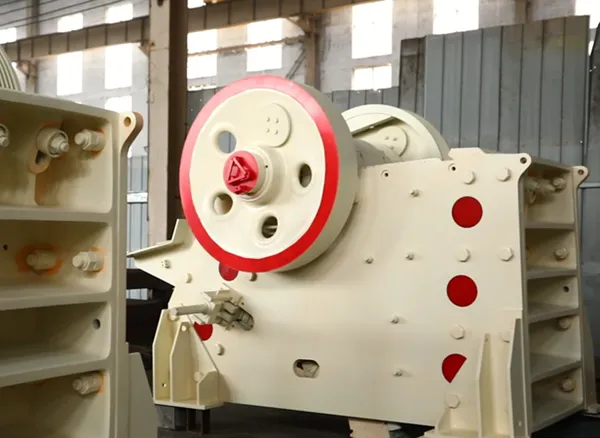Reducing the noise generated by a jaw crusher is crucial for worker safety, environmental regulations, and community relations. Jaw crushers are inherently noisy due to the high-impact nature of rock crushing. Here’s a breakdown of methods to reduce jaw crusher noise, categorized for clarity.

Optimize Feed:
Consistent Feed Rate: Avoid large, sudden drops of material. A steady, choked feed (keeping the crushing chamber relatively full) can sometimes dampen impact noise slightly, although it might increase overall operational noise. Experiment to find the optimal balance.
Scalping: Pre-screen the feed material to remove fines that don't need crushing. This reduces the amount of material going through and can lower noise.
Proper Maintenance:
Lubrication: Ensure all bearings and moving parts are adequately lubricated to reduce mechanical noise.
Tighten Fasteners: Loose bolts and components can vibrate excessively, creating noise. Regularly check and tighten all fasteners.
Replace Worn Parts: Worn jaw plates, bearings, and drive components can operate less efficiently and generate more noise. Replace them promptly.
Balance Rotating Parts: Ensure flywheels and drive components are properly balanced to minimize vibration.
Operational Settings: Ensure the crusher is operating at the recommended speed and Closed Side Setting (CSS) for the material being processed. Incorrect settings can increase stress and noise.
Enclosures:
Full Enclosure: Build a soundproof or sound-reducing enclosure around the crusher itself. This is often the most effective method but also the most expensive.
Considerations include:
Materials: Use heavy materials with good sound transmission loss (e.g., concrete, thick steel) combined with internal sound absorption materials (e.g., mineral wool, acoustic foam).
Ventilation: Enclosures require adequate ventilation systems, which themselves need silencers to prevent noise leakage.
Access: Design for easy maintenance access with acoustically sealed doors and hatches.
Partial Enclosures/Shields: strategically placed barriers or partial walls around the noise source can help deflect or absorb sound in specific directions.
Acoustic Lagging/Cladding:
Wrap the crusher body, feed hopper, discharge chutes, and other vibrating surfaces with acoustic insulation materials. This typically involves a dense barrier layer (like mass-loaded vinyl) and an absorptive layer (like mineral wool), covered by a protective outer jacket (e.g., sheet metal).
Vibration Isolation:
Mounting: Install the crusher on vibration isolation pads, springs, or mounts. This reduces the transmission of vibration (and thus structure-borne noise) into the supporting structure and ground.
Decoupling: Use flexible connections (e.g., rubber or canvas boots) for feed and discharge chutes/conveyors to prevent vibration transmission to connected equipment and structures.
Sound Barriers:
Erect walls or berms (earth mounds) between the crusher and noise-sensitive areas (like residential zones or worker locations). Barriers are most effective when tall, solid, long, and close to either the source or the receiver.
Acoustic Liners:
Line feed hoppers and discharge chutes with impact-absorbing materials like rubber or specialized wear-resistant liners that dampen the noise of material hitting the metal surfaces.

Soundproof Control Rooms: Operate the crusher remotely from an insulated, soundproof control cabin.
Hearing Protection: Ensure all personnel working near the crusher wear appropriate Personal Protective Equipment (PPE), specifically hearing protection (earplugs, earmuffs). Note: This protects workers but doesn't reduce the actual noise level emitted by the machine.
Distance: Increase the distance between the crusher and workers or sensitive areas whenever possible. Sound intensity decreases significantly with distance.
Limit Exposure Time: Rotate jobs or schedule tasks to limit the amount of time any individual spends in the high-noise area near the crusher.
Operating Hours: Restrict crusher operation to less sensitive times (e.g., daytime hours) if near residential areas.
Signage: Post clear warnings about high noise levels and mandatory hearing protection zones.
Implementation Strategy:
Noise Assessment: Conduct a thorough noise survey to identify the primary noise sources and paths, and measure current levels.
Prioritize: Focus on the most significant noise sources first.
Combine Methods: Often, a combination of the above techniques yields the best results (e.g., proper maintenance + vibration isolation + partial enclosure).
Consult Experts: Engage acoustic consultants or engineers specializing in industrial noise control for complex situations or when significant noise reduction is required. They can provide tailored solutions and ensure compliance with regulations.
Reducing jaw crusher noise often requires a multi-faceted approach, considering cost, feasibility, operational impact, and the required level of noise reduction.
Address: Luoyang Luoxin Industrial Park, Henan,China
E-mail: sales@yd-crusher.com
Phone: 86-139-3993-0123

Yude
Mechanical
Create the greatest value for customers
Provide the best quality products and services
86-139-3993-0123
sales@yd-crusher.com
Luoyang Luoxin Industrial Park, Henan,China